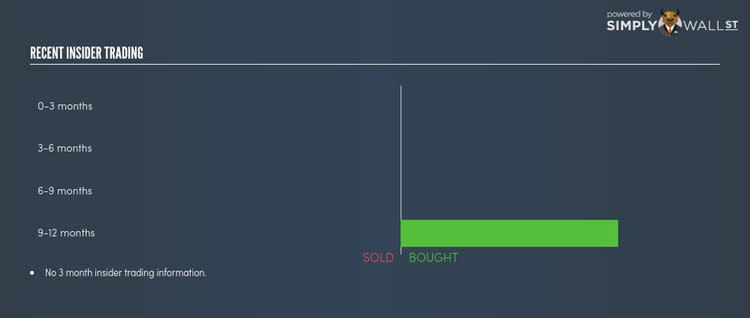Who Owns Most Of Mammoth Resources Corp (TSXV:MTH)?

I am going to take a deep dive into Mammoth Resources Corp’s (TSXV:MTH) most recent ownership structure, not a frequent subject of discussion among individual investors. Ownership structure has been found to have an impact on shareholder returns in both short- and long-term. Since the effect of an active institutional investor with a similar ownership as a passive pension-fund can be vastly different on a company’s corporate governance and accountability of shareholders, investors should take a closer look at XYZ’s shareholder registry. All data provided is as of the most recent financial year end.
Check out our latest analysis for Mammoth Resources
Institutional Ownership
Institutional investors transact in large blocks which can influence the momentum of stock prices, at least in the short-term, especially when there is a low level of public shares available on the market to trade. With an institutional ownership of 5.78%, MTH doesn’t seem too exposed to higher volatility resulting from institutional trading. Less covered stocks like MTH used to feature in legendary investor Peter Lynch’s portfolio, which would later be bought up by fast-following institutions as the stock gained more popularity.
Insider Ownership
Another important group of shareholders are company insiders. Insider ownership has to do more with how the company is managed and less to do with the direct impact of the magnitude of shares trading on the market. MTH insiders are also influential stakeholders with 8.26% ownership in the company. An insider stake of this level indicates that executives are highly aligned with the shareholders as both stand to gain when the value of the company rises. I will also like to check what insiders have been doing recently with their holdings. insider buying may be a sign of upbeat future expectations, however, selling doesn’t necessarily mean the opposite as insiders may be motivated by their personal financial needs.
General Public Ownership
The general public holds a substantial 77.88% stake in MTH, making it a highly popular stock among retail investors. This size of ownership gives retail investors collective power in deciding on major policy decisions such as executive compensation, appointment of directors and acquisitions of businesses. Such level of ownership gives retail investors the power to sway key policy decisions such as board composition, executive compensation, and potential acquisitions. This is a positive sign for an investor who wants to be involved in key decision-making of the company.
Private Company Ownership
Potential investors in MTH should also look at another important group of investors: private companies, with a stake of 8.07%, who are primarily invested because of strategic and capital gain interests. With this size of ownership in MTH, this ownership class can affect the company’s business strategy. As a result, potential investors should further explore the company’s business relations with these companies and find out if they can affect shareholder returns in the long-term.
What this means for you:
Are you a shareholder? Institutional ownership level and composition in MTH is not high nor active enough to significantly impact its investment thesis. If you’re interested in bolstering your portfolio with new stocks and are looking for ideas, take a look at our free app to see my list of stocks with a strong growth potential.
Are you a potential investor? Ownership structure should not be the only focus of your research when constructing an investment thesis around MTH. Instead, you should be evaluating fundamental factors like the relative valuation of MTH, which is an important driver that determines MTH’s share price. Take a look at our most recent infographic report on MTH for a more in-depth analysis of these factors to help you make a more well-informed investment decision.
NB: Figures in this article are calculated using data from the last twelve months, which refer to the 12-month period ending on the last date of the month the financial statement is dated. This may not be consistent with full year annual report figures.
To help readers see pass the short term volatility of the financial market, we aim to bring you a long-term focused research analysis purely driven by fundamental data. Note that our analysis does not factor in the latest price sensitive company announcements.
The author is an independent contributor and at the time of publication had no position in the stocks mentioned.


